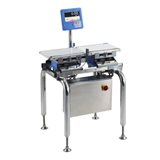This is important for a world economy that has had to expand on one less cylinder given Japan’s sluggish recent past.
According to The Lowy Institute, the Japanese economy is now its longest uninterrupted expansion since the late 1960s, real GDP has averaged over 2 per cent growth per annum since mid-2002, and in last calendar year, Japan achieved 5.5 per cent growth.
Given that Japan is still the world’s second largest economy, the return to growth is particularly especially given the world’s reliance on the US for economic momentum amongst the mature economies and China in the emerging camp.
But what does this mean for Australia? Plenty. After all, despite the rise of China, Japan is still Australia’s number one export destination. Australia exports over A$34 billion worth of goods and services per year to Japan and the Australia-Japan two way trade relationship is worth almost A$54 billion.
And apart from the overall benefits in terms of global growth, there are five other reasons why Japan is back on the radar of Australian exporters.
Firstly, Australia and Japan have just announced the commencement of negotiations for a free trade agreement in 2007.
Australia is looking to reduce tariff and non-tariff barriers facing Australian businesses in Japan and both nations are looking to expand trade and investment opportunities in each other’s market. Research that was jointly commissioned by the Governments of Australia and Japan, found that full and immediate trade and investment liberalisation could potentially bring gains of A$39 billion and A$27 billion to the GDP of Australia and Japan respectively.
Secondly, as many economists have noted, there has to be an increase in consumption in Japan, and that will mean more opportunities for Australia in Japan’s vast and sophisticated consumer market. So far, Japan’s return to growth has mainly been to an export revival (much of it technology to China) and the cleaning up of company balance sheets (as famously explained by Nomura economist Richard Koo in his influential book on the ‘balance sheet’ recession). Japan will now look to domestic as well as external drivers including lifting local investment and consumption.
Thirdly, there is likely to be a new wave of reform as Prime Minister Abe continues the reforms of recently retired Premier Koizumi. A new wave of ‘Koizuminomics’ under Abe has the potential to really open up the economy. With a return to growth, strong export performance and cleaned-up balance sheets and the slaying of deflation, the environment in Japan will be much more conducive to microeconomic and institutional reform.
In particular, there is scope for reform in several previously ‘untouchable’ parts of the Japanese economy – particularly in the services sector. Examples of services where Australian exporters have a comparative advantage and could potentially do well in Japan include the health, education and the lifestyle sector.
According to Professor James Kondo of Tokyo University: “The healthcare, education and the leisure sectors have traditionally been closed in Japan, but this will soon change to Australia’s benefit. We still haven’t realised the impact of the growth of Japan’s mature age cohort – and the spending power of mature age Japanese women.” In short, if you thought Bill Clinton’s ‘soccer moms’ were influential, wait until you see the economic power of Mrs Hashimoto and her neighbours.
Fourthly, Japan’s unique demographics should also create export opportunities at both ends of scale that are particularly suited to Australia.
At the young end of the market, consumer products like surf exports are booming, with Japan being the number one destination for Australia exports water skis, surfboards and water sports equipment (accounting for over a third of a 21 million dollar market).
At the other end of the scale, grey power in Japan is still doing its bit for our export account as well. According to Nobutaka Ishikure, the Chief Industry Officer at Japan Airlines: “We target three groups in our marketing – the YOLs (young office ladies), the OLs (office ladies) and the OBs (old boys). The OBs or Jukunen are really important as their trips are longer as retirement frees them up for longer stays.” This means more opportunities in health care and leisure – and less ‘fly in fly out’ short term tourism.
Finally, the other crucial factor to determine the success of Australian companies in generating more export opportunities in Japan is the need for businesses to establish a presence there. Despite the fact that over 3,500 Australian companies currently export to Japan, fewer than 100 have offices or investments. According to Australians on the ground in Japan, the lack of local business presence puts Australia at a disadvantage. Australia’s Senior Trade Commissioner in Tokyo, Phil Ingram, says:
“Australian businesses who establish an office in Japan are treated as a ‘local’ who gives them the advantage of becoming market insiders, allowing them to quickly identify new opportunities and changes in the market place. They are also better equipped to effectively market their goods and services and offer more responsive customer services to clients.”
According to research by Austrade/Sensis around 14 per cent of exporting small and medium sized enterprises sell to the Japanese market (which has jumped up from 12 per cent a year ago). However, given the more benign economic environment in Japan, with an increased emphasis on consumption, they’ll be plenty more room to move in the Japanese market especially if the services industry reforms kick-in.
Some Key Facts on Australia-Japan trade:
- Japan is Australia’s number 1 export market at $A31.5 billion or 18 per cent of total exports (2005 CY) or A$ 34.5 billion in 2005-06
- Japan is Australia’s number 1 trading partner at $50.6 billion or 14 per cent of total trade (2005 CY) or A$ 53.9 billion in 2005-06 FY
- Japan is Australia’s number 3 import source at $19.1 billion or 10 per cent of total (2005 CY)
- Australian minerals & energy exports to Japan were worth $21 billion in 2005-06
- Japan is Australia's largest market for coal, aluminium, LNG, LPG and copper ore as well as beef and dairy producers
- In Dec 2005, Japan was Australia’s 3rd largest source of foreign investment (total investment valued at A$53 billion) and Japan is the 4th largest destination Australian outward investment
- Japan is Australia’s 3rd largest source of tourists with 674,400 Japanese visiting Australia in 2005-06
- Japanese companies employ more than 200,000 Australian workers
Over 3,600 Australian businesses export to Japan (goods, FY 2005-06) and 14 per cent of all Australian SMEs export to Japan
Some key Australian players in the Japanese market – Macquarie Bank, Servcorp, ResMed, 33 South.
- Suppliers
- New to IndustrySearch? Book a Demo
- Advertise with us
- Login
- Email Marketing
- Buyers
- Get Quotes
- Articles & Ideas
- Login
- Subscribe to newsletter
- My Details
- Get Quotes
- Automation & Control
- Automotive Workshop Equipment
- Commercial Cleaning Equipment & Supplies
- Construction Equipment & Heavy Machinery
- Conveyor Systems & Components
- Electrical & Power Generation Equipment
- Electronic Components
- Farming & Agriculture
- Food & Beverage Processing
- Forklifts & Forklift Attachments
- Hydraulic & Pneumatic Equipment
- Industrial Materials, Tools & Components
- Industrial Pumps
- IT Hardware & Industrial Computing
- IT Software & Applications
- Laboratory Equipment & Instruments
- Manufacturing & Industrial Equipment
- Material Handling & Lifting Equipment
- Metalworking & Machining
- Mining Equipment & Machinery
- Packaging & Labelling Machinery
- Pallet Handling Equipment
- Personal Protective Equipment
- Security & Surveillance
- Test & Measurement
- Transport & Logistic Equipment
- Warehouse Storage, Shelving & Racking
- Waste Treatment & Environmental Management
- Welding Machines & Accessories
- Woodworking & Joinery Machines
- Workplace Equipment
- Workplace Safety Equipment
- Get Quotes
- Automation & Control
- Automotive Workshop Equipment
- Commercial Cleaning Equipment & Supplies
- Construction Equipment & Heavy Machinery
- Conveyor Systems & Components
- Electrical & Power Generation Equipment
- Electronic Components
- Farming & Agriculture
- Food & Beverage Processing
- Forklifts & Forklift Attachments
- Hydraulic & Pneumatic Equipment
- Industrial Materials, Tools & Components
- Industrial Pumps
- IT Hardware & Industrial Computing
- IT Software & Applications
- Laboratory Equipment & Instruments
- Manufacturing & Industrial Equipment
- Material Handling & Lifting Equipment
- Metalworking & Machining
- Mining Equipment & Machinery
- Packaging & Labelling Machinery
- Pallet Handling Equipment
- Personal Protective Equipment
- Security & Surveillance
- Test & Measurement
- Transport & Logistic Equipment
- Warehouse Storage, Shelving & Racking
- Waste Treatment & Environmental Management
- Welding Machines & Accessories
- Woodworking & Joinery Machines
- Workplace Equipment
- Workplace Safety Equipment
Trusted by 1,000,000+ Australian industrial buyers
Buyers
- Discover products & solutions
- Login
- Subscribe To Newsletter
- Browse All Products
- Read Articles
Suppliers
Advertise
- Promote your products & solutions
- New to IndustrySearch? Book a Demo
- Login / Forgot Password
- Advertise Your Products
- Success Stories
- Email Marketing
- Suppliers
- Advertise with us
- Login
- Email Marketing
- Buyers
- Get Quotes
- Articles & Ideas
- Login
- Subscribe to newsletter
- My Details
Get Quotes
- Automation & Control
- Automotive Workshop Equipment
- Commercial Cleaning Equipment & Supplies
- Construction Equipment & Heavy Machinery
- Conveyor Systems & Components
- Electrical & Power Generation Equipment
- Electronic Components
- Farming & Agriculture
- Food & Beverage Processing
- Forklifts & Forklift Attachments
- Hydraulic & Pneumatic Equipment
- Industrial Materials, Tools & Components
- Industrial Pumps
- IT Hardware & Industrial Computing
- IT Software & Applications
- Laboratory Equipment & Instruments
- Manufacturing & Industrial Equipment
- Material Handling & Lifting Equipment
- Metalworking & Machining
- Mining Equipment & Machinery
- Packaging & Labelling Machinery
- Pallet Handling Equipment
- Personal Protective Equipment
- Security & Surveillance
- Test & Measurement
- Transport & Logistic Equipment
- Warehouse Storage, Shelving & Racking
- Waste Treatment & Environmental Management
- Welding Machines & Accessories
- Woodworking & Joinery Machines
- Workplace Equipment
- Workplace Safety Equipment
Get Quotes
- Automation & Control
- Automotive Workshop Equipment
- Commercial Cleaning Equipment & Supplies
- Construction Equipment & Heavy Machinery
- Conveyor Systems & Components
- Electrical & Power Generation Equipment
- Electronic Components
- Farming & Agriculture
- Food & Beverage Processing
- Forklifts & Forklift Attachments
- Hydraulic & Pneumatic Equipment
- Industrial Materials, Tools & Components
- Industrial Pumps
- IT Hardware & Industrial Computing
- IT Software & Applications
- Laboratory Equipment & Instruments
- Manufacturing & Industrial Equipment
- Material Handling & Lifting Equipment
- Metalworking & Machining
- Mining Equipment & Machinery
- Packaging & Labelling Machinery
- Pallet Handling Equipment
- Personal Protective Equipment
- Security & Surveillance
- Test & Measurement
- Transport & Logistic Equipment
- Warehouse Storage, Shelving & Racking
- Waste Treatment & Environmental Management
- Welding Machines & Accessories
- Woodworking & Joinery Machines
- Workplace Equipment
- Workplace Safety Equipment
Trusted by 1,000,000+ Australian industrial buyers












